The engine temperature warning light is appearing on your car’s dashboard, right?
This can be a nerve-wracking experience, especially if you’re unsure about the meaning of this light and how to respond to it.
But don’t worry – I’m here to help!
In this guide, I’ll explain everything you need to know about the engine temperature warning light, including what it means, why it appears, and what you should do if it lights up.
Ready to get started?
What Does It Mean When the Engine Temperature Warning Light Comes on?
The light indicates that your engine temperature is too hot or too cold. And that’s not good news because your car engine needs to be at a specific temperature to work properly.
Usually, the engine temperature warning light comes on when you start the car, but it should go off once the engine has started. This is normal, but if the light stays on or flashes while driving, especially if it’s the red symbol, you should take action right away. See the details below.
High Engine Temperature Warning Light (Red)
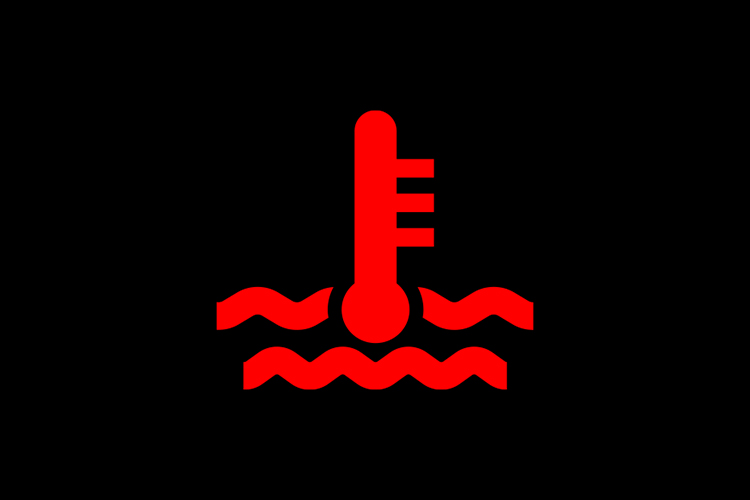
The appearance of the engine temperature warning light can vary depending on the make and model of your vehicle. In some cases, the warning light may also be accompanied by a message on the dashboard display.
As mentioned above, when you turn on your car, the warning light usually lights up in red for a couple of seconds. But if the light start stays illuminated, it’s a sign that your engine is overheating.
Low Engine Temperature Warning Light (Blue)
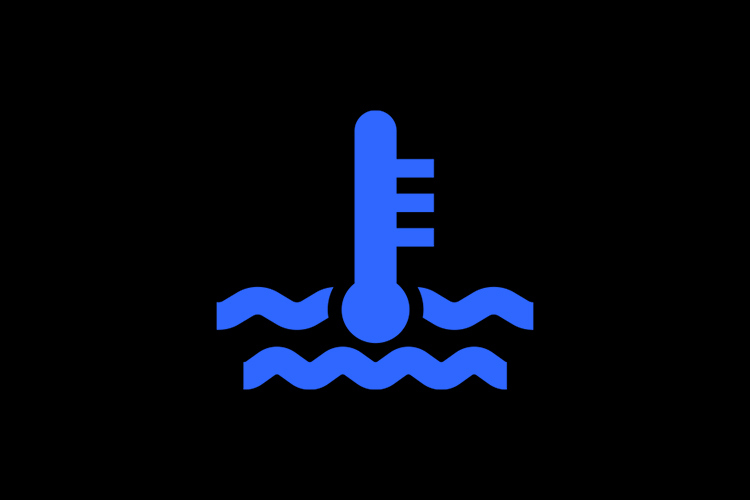
In contrast, if you see a blue engine temperature warning light – it’s not as serious as a red one.
This light only appears when the engine coolant temperature is low and will turn off once the engine is warm.
However, suppose the low engine temperature light stays on even after the engine has warmed up. It could be due to a malfunctioning temperature sensor. In this case, you should inspect and replace the sensor.
Can I Still Drive With the Engine Temperature Warning Light On?
No, you shouldn’t continue driving once you notice the warning light. Continuing to drive your vehicle with the warning light can cause severe engine damage, resulting in costly repairs.
If the red warning light comes on while driving, it’s important to pull over to a safe location and turn off the engine. Then, follow my guide below.
Why Is the Engine Temperature Warning Light On?
There are several reasons why the warning light may be on. These include:
Overworked Engine During Hot Weather
Yes, an overworked engine during hot weather can cause the engine temperature warning light to come on. The high outside temperature puts extra stress on your engine, making it harder to keep a safe operating temperature. If the engine can’t dissipate heat efficiently, it can cause the coolant temperature to rise above normal levels, triggering the warning light.
Solution: Pull over and turn off the engine. This should allow the engine to cool down before continuing to drive.
Low Coolant Level (Coolant Leaks)
This is the most common cause of the engine temperature warning light. If the coolant level in the engine is low, the engine may not be able to regulate its temperature properly, leading to overheating.
The reason behind the low coolant level is leaking in your car’s cooling system. Leaks can occur in several places, such as the reservoir, radiator cap, water pump, head gasket, or engine block.
Solution:
- Check the coolant level and refill it
- Inspect the cooling system for leaks or malfunctions. If you notice any leaks, have the cooling system repaired by a qualified mechanic.
Failed Thermostat
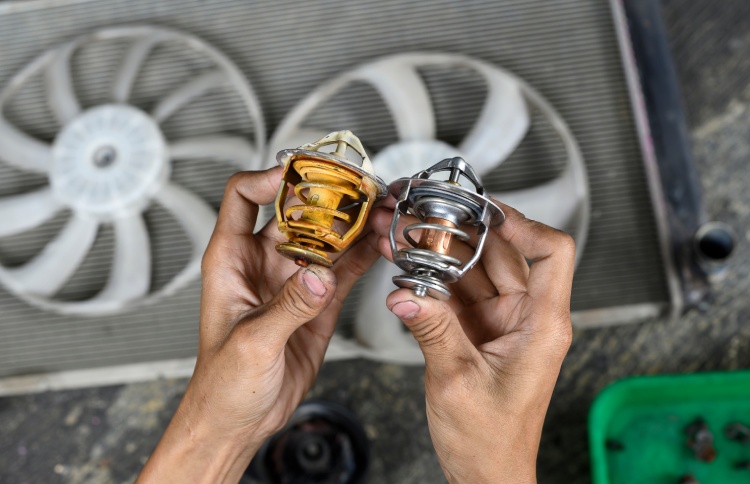
The thermostat is responsible for regulating the flow of coolant in the engine. If the thermostat is stuck closed, the coolant will not flow through the engine, causing overheating.
Solution: Replaced the thermostat.
Blocked Radiator
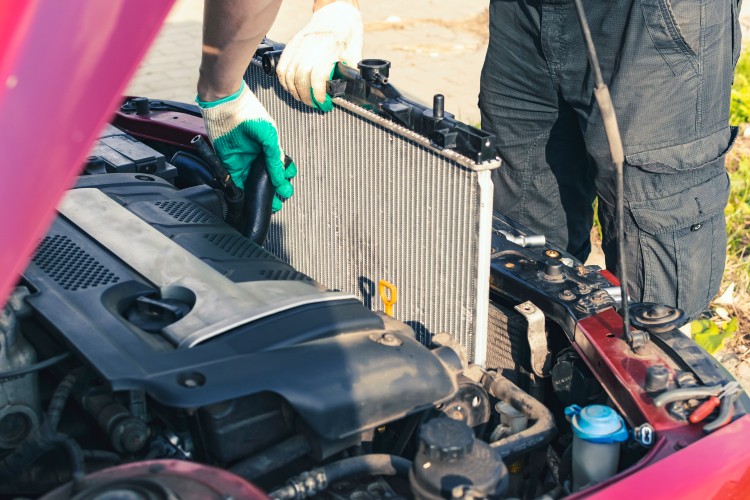
The radiator’s job is to dissipate the heat generated by the engine. If the radiator is obstructed, it prevents the proper flow of coolant, leading to overheating.
Obstructions in the radiator can occur due to debris, dirt, or bugs accumulated on the radiator’s exterior or fins.
Solution: Inspect the exterior for any debris or dirt blocking the radiator’s fins and try cleaning it up. Internal blockages in the radiator may require flushing, which should be done by a qualified mechanic.
Cooling Fan Failure
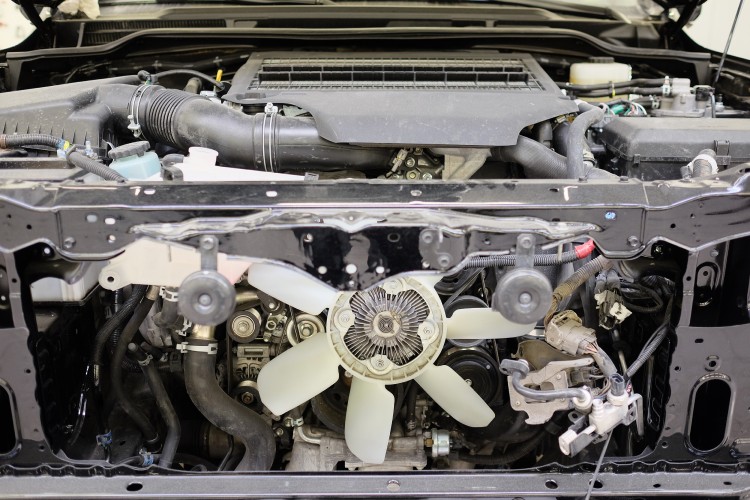
The cooling fan helps to regulate the temperature of the engine by drawing air through the radiator. If the cooling fan is not working correctly, the engine may overheat.
There are several reasons why the radiator fan may fail, including a faulty fan motor, a blown fuse, a damaged fan relay, or a broken fan blade.
Solution: To diagnose a faulty radiator fan, check the fan fuse and relay to ensure they are functioning correctly. If these components work perfectly, continue to test the fan motor. If the fan motor is faulty, it will need to be replaced.
Faulty Water Pump
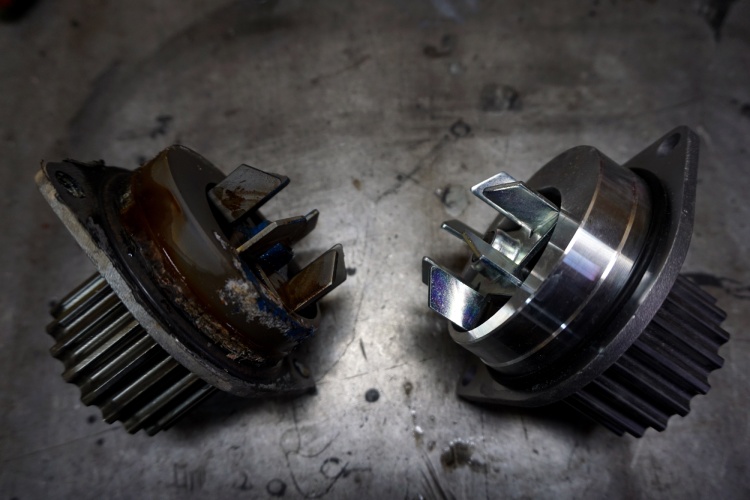
The water pump is responsible for circulating coolant through the engine. If the water pump is not functioning correctly, the coolant will not flow, leading to overheating.
A faulty pump can result from several issues, including a broken impeller, a leaking seal, or a malfunctioning bearing.
Solution: Consult your mechanic to perform a pressure test to determine if the coolant is circulating correctly. They can also inspect the pump for damage or leaks.
What to Do When the Engine Temperature Warning Light Comes on?
If the engine temperature warning light comes on while you’re driving, take the following steps:

Step 1: Pull over safely and let the engine cool down
Find a safe place to pull over and turn off the engine.
Wait for the engine to cool down before opening the hood to avoid hot steam or coolant injury. This may take 30 minutes to an hour.
Step 2: Check the coolant level
- Open the hood and locate the coolant reservoir. In most cars, the reservoir is situated behind the engine bay and is easily recognized by the coolant symbol on the cap.
- Check the coolant level in the reservoir. The coolant level should be between the minimum and maximum marks.
- Add the coolant til it reaches the “Max” mark.
Note: Don’t forget to use the recommended type of coolant as specified in your vehicle’s owner’s manual.
Step 3: Inspect coolant leaks
Check for any coolant leaks in the reservoir, radiator cap, or other leaks.
If there are no leaks, move to the next step.
Step 4: Use an OBD2 scanner to find the cause
You can use an OBD2 scanner to diagnose the problem yourself. This will save you diagnostic costs.
- Connect the scanner to the car’s OBD port.
- Turn the ignition on.
- Select the “Read Codes” function on the scanner to search for the codes.
- Figure out what the code means by using the DTC Lookup Library on the scanner or going to the OBD2 Codes Lookup. You will find meaning, causes, symptoms, and fixes.
Step 5: Repair the broken or malfunctioning parts
Once you find the problem, make repairs immediately. If you cannot handle it yourself, consult a mechanic.
Step 6: Reset the light
Once done, choose the “Erase” function on the scanner to clear the trouble codes.
Next, restart your engine and go for a test drive. The light will be gone.
What’s Next?
Don’t let the engine temperature warning light damper your driving experience. With the knowledge and tools provided in this guide, you can confidently tackle the warning light head-on and keep your engine running smoothly.
Remember always to have your OBD2 scanner in case of emergencies. Read more in my review of the Best OBD2 Scanners.
In case you have any concerns related to dealing with the light, let me know in the comment box below.


Recommended for you
Reduced Engine Power Light: Meaning, Causes, & Fixes
What the Check Engine Light is Telling You and How to Respond
Flashing Glow Plug Light: Here Is What You Need to Do